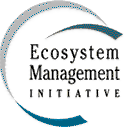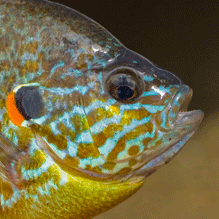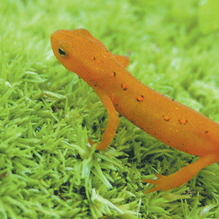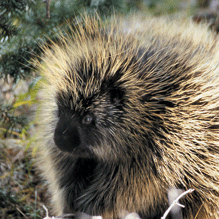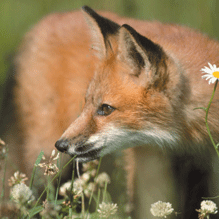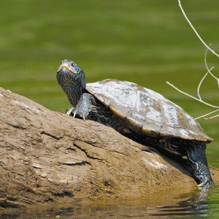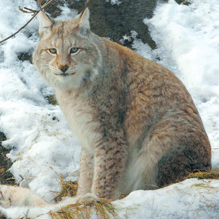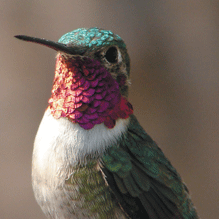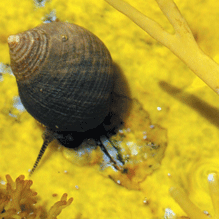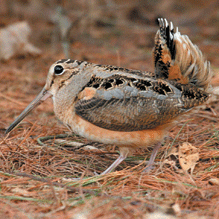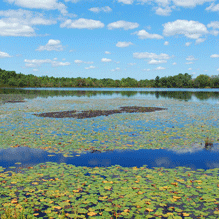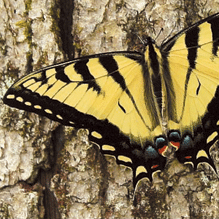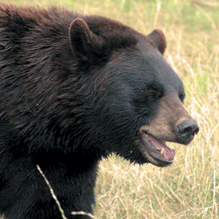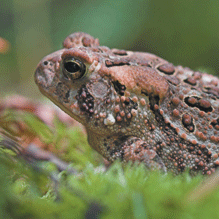Regional
These analyses explore the development, contents, and implementation of the Comprehensive Wildlife Conservation Strategies (CWCS), also known also known as State Wildlife Action Plans (SWAP), for the nine states of the Northeast. From a regional perspective, we analyze plan development processes, elements of various plans, and developments in the two and a half years since the plans’ completion. We uncover the impact of the plans on fish and wildlife agencies and conservation organizations across the region, and we examine both factors that have facilitated progress and challenges to promoting wildlife strategies. Finally, we provide recommendations for improving the next iteration of plans and expanding the impact of the plans in implementation. The Executive Summary contains an abbreviated summary of the findings outlined in detail in the full-length report.
| State Wildlife Action Plans in the Northeast: A Regional Synthesis (9.7 mb) | |
Northeast Regional Excutive Summary
|
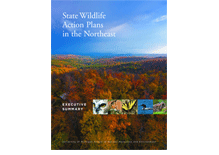 |
State Characterizations
State Characterization reports summarize the contents of each state plan and how the plan is being implemented for each of the nine study-area states. Information presented in the State Characterizations is based on interviews with representatives from agencies and non-agency organizations, as well as information presented in the individual plans themselves.
- Connecticut (1.1 mb)
- Maine (1.4 mb)
- Massachusetts (1.5 mb)
- New Hampshire (1.9 mb)
- New Jersey (1.5 mb)
- New York (1.7 mb)
- Pennsylvania (1.4 mb)
- Rhode Island (1.3 mb)
- Vermont (1.3 mb)
Drill Downs
Drill downs are topic-based individual- or partner-driven research. The subject of each drill down is described below, and includes a description of the research questions and key findings discussed in the report. Contact information for each report's author(s) is also included at the end of each drill down summary.
The Landowner Incentive Program: Engaging the Private Landowner in Cooperative Conservation (7.3 mb)
Research questions: What are the strengths and weaknesses of the Landowner Incentive Program? Are the Administration’s reasons for cutting LIP funds justifiable? How can future private landowner engagement programs be improved?
Key findings: One of the key strengths of LIP is the flexibility the program affords states to design programs according to the state’s needs. LIP permits states to target landowners directly and develop optimal strategies to reach species and habitats of greatest concern. Many states have never had a private landowner program. For these states, it took several years to hire staff and develop a contractual process that would allow them to fund private land management or conservation. Given the long start-up time, actual restoration and management work has really just begun, just as the Federal program funding appears to be ending.
State Fish and Wildlife Agency Conservation Priorities and Community Planning in the Northeastern United States (172 mb)
Research questions: How do state fish and wildlife agency conservation priorities in the Northeast US affect local land use decision making? What is the role of the State Wildlife Action Plans (SWAP) in encouraging state-local collaboration?
Key findings: Northeast states vary considerably in method and degree of engagement with local planners: (a) Some states had strong existing programs prior to the SWAP, such as Maine’s Beginning with Habitat and New Jersey’s Landscape Project; (b) some states have new emerging initiatives that are strongly tied to SWAP goals, such as New Hampshire’s new unnamed outreach program and the Vermont Community Wildlife Program; (c) some states, such as Pennsylvania and Rhode Island, do not have statewide formal collaboration, however these SWAP coordinators know how they would enhance state-local collaboration if resources were not a constraint; (d) at least one state, NY, has successful outreach and collaboration in a specific region under a particular program, but not statewide.
Tools for successful collaboration include: creating an agency position with the principal role of collaboration with localities; providing technical assistance in the form of skill-building workshops; providing scalable maps that prioritize conservation areas; working with or establishing intermediary organizations that can serve as liaison between agencies and localities.
Putting Conservation on the Map: Benefits, Challenges, and Recommendations for the State Wildlife Action Plans (23.3 mb)
What are the major obstacles that the coordinators have faced in achieving these goals? How conflicting spatial scales, classification systems, species/habitat prioritization methodology, and data model structures be related to one another to improve interstate discourse, data sharing, and collaborative planning?
The use of Geographic Information Systems (GIS) has become a crucial element of landscape ecology and conservation planning. The integrated nature of the State Wildlife Action Plans and their emphasis on stakeholder and interagency collaboration has created a need for innovative approaches to creating dialogue opportunities. In particular, plan coordinators have expressed interest in using GIS to foster these opportunities.
Managing for Transboundary Freshwater Habitats and Wildlife in the Northeast Region: Opportunities, Challenges, and Strategies (10.5 mb)
How can states create successful transboundary management regimes for aquatic habitat and species? Why is it important to include these types of implementation and monitoring plans in the state’s individual wildlife action plans?
Key findings: Habitats, while associated with aquatic freshwater species of concern, are not similarly classified across state boundaries. Often different states classify habitats based on similar, but slightly different traits. Likewise, species are not identified using the same systems across states in the region.
Looking Beyond the Agency: The Influence of Stakeholder Engagement on the Perceived Success of the Maine, New Hampshire, and Vermont State Wildlife Action Plans (4.2 mb)
Research questions: Which methods of engagement in the development of the northern New England plans, were stakeholders most satisfied with? Do greater or lesser levels of satisfaction with the engagement process correspond to greater or lesser levels of satisfaction with the plans or engagement in implementation?
Key findings: There does seem to be some association between satisfaction with the engagement processes and satisfaction with the plans, though there appears to be a stronger relationship between the belief of stakeholders that they were able to influence plan and their satisfaction with the plan. There also seems to be a relationship between satisfaction with the engagement process and satisfaction with the implementation process, though stakeholders generally seem less satisfied with implementation than they were with plan development. Engagement in implementation seems to be influenced by the level of engagement prior to the development of the plan, more than by satisfaction with the plan or with the development process.
Collaborative Partnerships: A Study on Implementing the State Wildlife Action Plans (1.4 mb)
Research questions: What have been the most effective methods of creating, managing, and utilizing partnerships for the implementation of actions related to the State Wildlife Action Plans? Have the plans changed how the states approach partnerships for wildlife conservation?
Key findings: Most states have not formed a large number of new partnerships as a result of plan implementation. Most have rather expanded their relationships with existing partners while developing a couple new partnerships here and there. Many states noted networking by using current partners to find new partners as an effective approach to identifying new possible partnerships. In areas where the challenge of finding NGO partners is high due to low numbers of NGOs (the Southeast region, for example) some states have strategically used funds by providing seed money for NGOs within the state that they feel will be helpful for conservation partnerships in the future. Most states identify having a transparent process to be one of the most important factors in maintaining successful partnerships for conservation.
Federal Collaboration in State Wildlife Management: Cooperation through Compatible Objectives (2.9 mb)
Research questions: What are potential opportunities for federal funding for the implementation of State Wildlife Action Plans in addition to State Wildlife Grant funds?
Key findings: While wildlife conservation is a primary objective for may federal assistance programs, this research focused on novel approaches that may be underutilized by state agencies and NGOs. These funding opportunities can arise when the missions of federal agencies are compatible with wildlife conservation and effective collaboration can provide opportunities to achieve wildlife conservation goals while also meeting the objectives of other agencies. Programs with potential to fund actions included in the State Wildlife Action Plans were identified in the Department of Defense, Transportation, Agriculture, Commerce, and Homeland Security and the Environmental Protection Agency.
